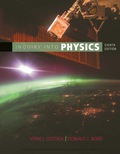
Inquiry into Physics
8th Edition
ISBN: 9781337515863
Author: Ostdiek
Publisher: Cengage
expand_more
expand_more
format_list_bulleted
Concept explainers
Question
Chapter 9, Problem 1PIP
To determine
The examples of Newton’s investigations into optical phenomena.
Expert Solution & Answer
Want to see the full answer?
Check out a sample textbook solution
Students have asked these similar questions
Optics can be subdivided into two categories: Geometrical and Physical. Explain the basic assumption behind each of these categories and give an example of a phenomenon which is explained by each.
Define optics and also explain its two major parts.
What does the answers to these questions say about vision. What can we do with lenses to correct different issues with vision.
Chapter 9 Solutions
Inquiry into Physics
Ch. 9 - Give three advantages that the Fresnel lens design...Ch. 9 - Prob. 2OEACh. 9 - Prob. 1PIPCh. 9 - Thomas Young’s conception of the fundamental...Ch. 9 - The shell” of a concept map dealing with lenses...Ch. 9 - Sections 9.6 and 9.7 deal with the phenomena of...Ch. 9 - (Indicates a review question, which means it...Ch. 9 - Prob. 2QCh. 9 - Prob. 3QCh. 9 - Prob. 4Q
Ch. 9 - Prob. 5QCh. 9 - Prob. 6QCh. 9 - Prob. 7QCh. 9 - Prob. 8QCh. 9 - Prob. 9QCh. 9 - Prob. 10QCh. 9 - Prob. 11QCh. 9 - (Indicates a review question, which means it...Ch. 9 - (Indicates a review question, which means it...Ch. 9 - (Indicates a review question, which means it...Ch. 9 - Prob. 15QCh. 9 - Prob. 16QCh. 9 - (Indicates a review question, which means it...Ch. 9 - (Indicates a review question, which means it...Ch. 9 - (Indicates a review question, which means it...Ch. 9 - Prob. 20QCh. 9 - Prob. 21QCh. 9 - Prob. 22QCh. 9 - Prob. 23QCh. 9 - Prob. 24QCh. 9 - Prob. 25QCh. 9 - Prob. 26QCh. 9 - Prob. 27QCh. 9 - (Indicates a review question, which means it...Ch. 9 - Prob. 29QCh. 9 - Prob. 30QCh. 9 - Prob. 31QCh. 9 - Prob. 32QCh. 9 - Prob. 33QCh. 9 - (Indicates a review question, which means it...Ch. 9 - Prob. 35QCh. 9 - Prob. 36QCh. 9 - Prob. 37QCh. 9 - (Indicates a review question, which means it...Ch. 9 - Prob. 39QCh. 9 - Prob. 40QCh. 9 - Prob. 41QCh. 9 - (Indicates a review question, which means it...Ch. 9 - Prob. 43QCh. 9 - Prob. 44QCh. 9 - Prob. 45QCh. 9 - Prob. 46QCh. 9 - Prob. 47QCh. 9 - Prob. 48QCh. 9 - Prob. 49QCh. 9 - Prob. 50QCh. 9 - Prob. 51QCh. 9 - Prob. 52QCh. 9 - Prob. 53QCh. 9 - Prob. 54QCh. 9 - Prob. 55QCh. 9 - Prob. 56QCh. 9 - Prob. 57QCh. 9 - Prob. 58QCh. 9 - Prob. 59QCh. 9 - Prob. 60QCh. 9 - Suppose a beam of red light from an He-Ne laser...Ch. 9 - In a double-slit interference experiment, a...Ch. 9 - A light ray traveling in air strikes the surface...Ch. 9 - A ray of yellow light crosses the boundary between...Ch. 9 - Prob. 5PCh. 9 - A fish looks up toward the surface of a pond and...Ch. 9 - A camera is equipped with a lens with a focal...Ch. 9 - A 2.0-cm-tall object stands in front of a...Ch. 9 - When viewed through a magnifying glass, a stamp...Ch. 9 - . A person looks at a statue that is 2 m tall. The...Ch. 9 - Prob. 11PCh. 9 - . A small object is placed to the left of a convex...Ch. 9 - . If the object in Problem 12 is moved toward the...Ch. 9 - . (a) In a camera equipped with a 50-mm...Ch. 9 - . The focal length of a diverging lens is...Ch. 9 - . The equation connecting s, p, and f for a simple...Ch. 9 - . If the mirror described in the previous problem...Ch. 9 - Prob. 18PCh. 9 - Prob. 19PCh. 9 - Prob. 1CCh. 9 - In Section 9.6, we described how the speed of...Ch. 9 - Would the critical angle for a glass—water...Ch. 9 - Prob. 4CCh. 9 - Prob. 5CCh. 9 - Prob. 6CCh. 9 - Prob. 7CCh. 9 - Prob. 8CCh. 9 - Prob. 9CCh. 9 - Prob. 10C
Knowledge Booster
Learn more about
Need a deep-dive on the concept behind this application? Look no further. Learn more about this topic, physics and related others by exploring similar questions and additional content below.Similar questions
- Geometric optics describes the interaction of light with macroscopic objects. Why, then, is it correct to use geometric optics to analyze a microscope’s image?arrow_forwardWhich mirror is used as a rear view mirror in vehicles and why?arrow_forwardOptics: make a list of the common aberrations: 1-2 sentence description of each plus a discussion of common causes and solutions.arrow_forward
- Prove stoke's law in applied optics.arrow_forwardHow does the distance between concave and convex lens compare to the focal lengths of the lenses?arrow_forwardA convergent lens of focal length 19 cm gives a real image that is 3.1 times larger than the object. Calculate the distance between the object and the lens, in centimeters.arrow_forward
- A person with a myopic eye cannot see objects beyond a distance of 1.5 m. What would be the power of the corrective lens used to restore proper vision?arrow_forwardHow does the power of lens is related to its focal length?arrow_forwardConsider a 10D lens that is used to image an object located 30 cm in front of the lens. Calculate the positions of the image and the magnification provided by the lens. the lens is placed in air.arrow_forward
arrow_back_ios
SEE MORE QUESTIONS
arrow_forward_ios
Recommended textbooks for you
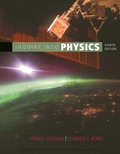
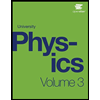 University Physics Volume 3PhysicsISBN:9781938168185Author:William Moebs, Jeff SannyPublisher:OpenStax
University Physics Volume 3PhysicsISBN:9781938168185Author:William Moebs, Jeff SannyPublisher:OpenStax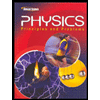 Glencoe Physics: Principles and Problems, Student...PhysicsISBN:9780078807213Author:Paul W. ZitzewitzPublisher:Glencoe/McGraw-Hill
Glencoe Physics: Principles and Problems, Student...PhysicsISBN:9780078807213Author:Paul W. ZitzewitzPublisher:Glencoe/McGraw-Hill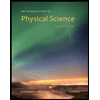 An Introduction to Physical SciencePhysicsISBN:9781305079137Author:James Shipman, Jerry D. Wilson, Charles A. Higgins, Omar TorresPublisher:Cengage Learning
An Introduction to Physical SciencePhysicsISBN:9781305079137Author:James Shipman, Jerry D. Wilson, Charles A. Higgins, Omar TorresPublisher:Cengage Learning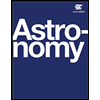 AstronomyPhysicsISBN:9781938168284Author:Andrew Fraknoi; David Morrison; Sidney C. WolffPublisher:OpenStax
AstronomyPhysicsISBN:9781938168284Author:Andrew Fraknoi; David Morrison; Sidney C. WolffPublisher:OpenStax


University Physics Volume 3
Physics
ISBN:9781938168185
Author:William Moebs, Jeff Sanny
Publisher:OpenStax

Glencoe Physics: Principles and Problems, Student...
Physics
ISBN:9780078807213
Author:Paul W. Zitzewitz
Publisher:Glencoe/McGraw-Hill

An Introduction to Physical Science
Physics
ISBN:9781305079137
Author:James Shipman, Jerry D. Wilson, Charles A. Higgins, Omar Torres
Publisher:Cengage Learning

Astronomy
Physics
ISBN:9781938168284
Author:Andrew Fraknoi; David Morrison; Sidney C. Wolff
Publisher:OpenStax